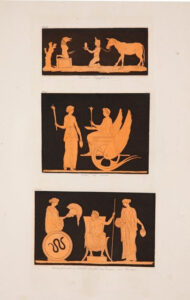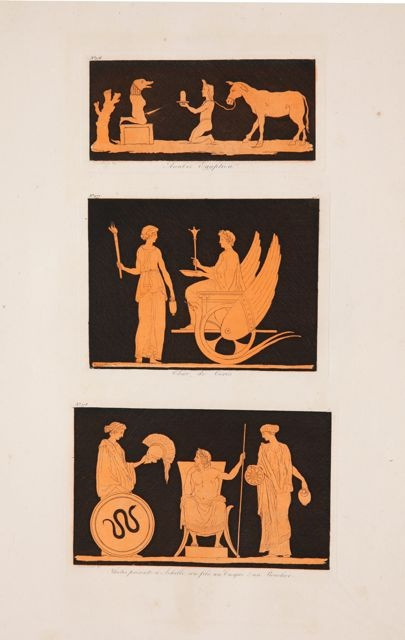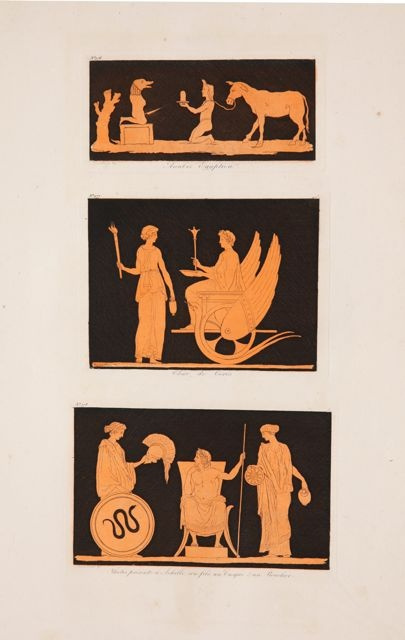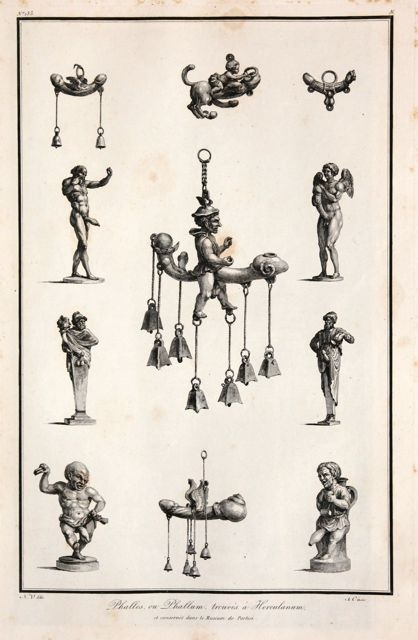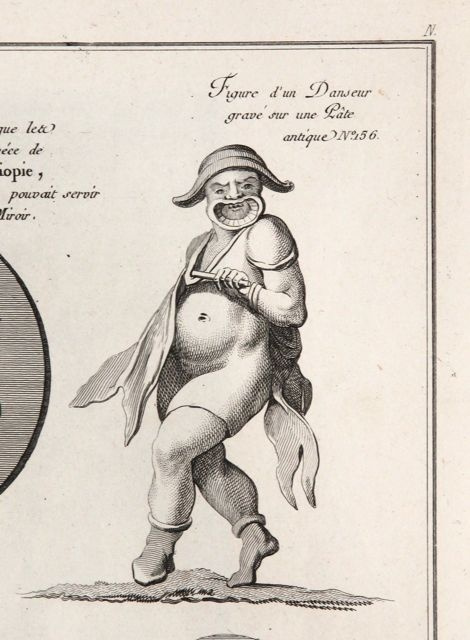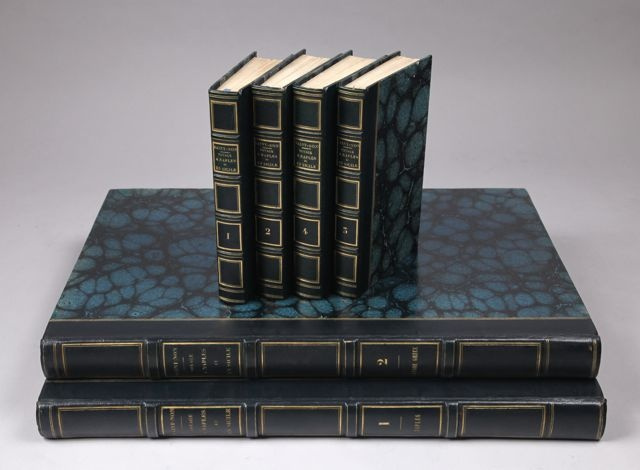Paris, Houdaille, Libraire-Éditeur, 1836.
4 volumes 8vo and 2 folio atlases; (2)-LXXIX-460 pp. / (2)-587 pp. / (2)-522 pp. / (2)-614 pp., the atlases are composed by:
[Naples]-1 large title-page, 285 engravings, maps, figures[1-285] / [Grande Grèce]-1 large title-page-273 engravings, maps, figures [286-558 and last], blue half-shagreen, ribbed spines beautifully decorated, gilt fillets and panels, gilt title. Uniform contemporary binding, superb copy.
Very rare complete third edition (Paris, Dufour & Cie, 1829, for the second edition) illustrated with 558 engravings.
Missing from Cicognara, Cremonini and numerous bibliographies on the subject.
Blanc, 957 (for the edition of 1829); Quérard, French Literature, t. VIII, p. 360.
The additions made to this edition by Charrin are: a chapter containing the description of the Etruscans, historical and geographical notes, a detailed analysis of the work, a biographical notice on Richard de Saint-Non and 141 additional plates of which 27 in color about the Etruscans.
During a journey in the Two Sicilies, while his companions took the measurements of the temples and accumulated the sketches, Denon composed on paper a travel journey with a remarkable style, which he communicated to the abbot of Saint-Non. This journal, associated to pages of Chamfort, Cabanis, Faujas de Saint-Fond, Dolomieu, and other fine quills, would form the text material of the Voyage pittoresque, but the great merit of this monumental work resides less in the text than in the exceptional engravings perfectly executed.
“Saint-Non (1727-1791), better known as the Abbé de Saint-Non, was a French engraver, designer, archaeologist and traveller. In this Age of Enlightenment, he rubbed enlightened shoulders with Rousseau and U.S. ambassador, Benjamin Franklin. He was an avid participant in and chronicler of the Grand Tour. In 1759 Saint-Non awraded himself a dispensation from his duties as a deacon and lawyer and went, in the company of the painters Jean-Honoré Fragonard and Hubert Robert, on a grand tour through Italy in the following two years. Initially his plan was to publish a Voyage pittoresque comprising five volumes devoted to the whole of Italy and one volume to Switzerland, but then was limited to southern Italy only.
The work was elegant and monumental, containing a political and social history of the Kingdom of Naples, including Sicily, with sections on the recent archaeological findings at Herculaneum and Pompeii, the geology of Vesuvius and the Plegrean Fields, flora and fauna, etc. etc.
It is lavishly adorned with engravings and illustrations by the best artists of the day, including Saint-Non, himself. In all 81 draftsmen and engravers contributed to the more than 420 illustrations, the earliest drawings dating from the years 1760/1761 and being by Fragonard and Hubert Robert. Originally forming part of Saint-Non’s private collection they were not intended for publication.
Another group of drawings are those by the landscape painter Claude-Louis Châtelet and the two architectural draftsmen Louis-Jean Desprez and Jean-Augustin Renard who, on behalf of the editor, had travelled under the direction of Dominique Vivant Denon, to Southern Italy in 1777-1778. These are of particular documentary value since they show views of monuments which are now destroyed, rebuilt or weather beaten, for example the Church of the Madonna della Croce in Barletta or the castle of Lucera, “which could be reconstructed in details owing to Desprez drawings“. (Petra Lamrs).
A detailed descriptive list of all illustrations can be found in Lamers’ thesis published in 1992.
The publication of the Voyage pittoresque was financed by a consortium of Saint-Non himself, his older brother Louis Richard de la Bretèche (1722-1804), and most importantly by Jean-Benjamin de Laborde (1734-1794), the immensly wealthy fermier général, musical author and composer. The costs finally brought about Abbe Saint Non’s financial ruin and when he turned to the publication of the third volume in 1783 with a request for more financial support to Laborde, the latter refused, and was then replaced by another partner. (cf. Tuzet – Une querelle littéraire en 1785 L’Abbé de Saint-Non et ses collaborateurs, in: Revue de Littérature comparée, vol xxi (1947), p. 428 et seq.)
